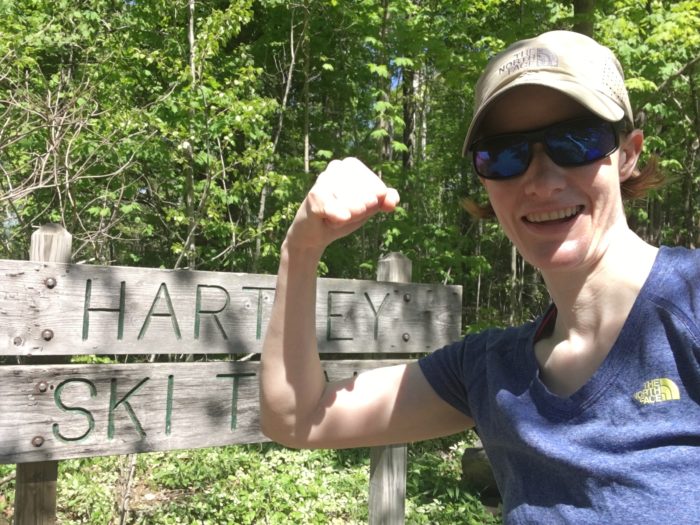Copyright ©2025 LifeSource | Terms of Service
Every Day is a Gift
Julianne Vasichek
Transplant Recipient, Minnesota
I was the recipient of a lifesaving liver transplant on February 28, 2015, coincidentally International Rare Disease Day promoted by the National Organization for Rare Disorders. After diagnosis in 2008, I began volunteering with the rare disease community PSC Partners Seeking a Cure and in 2012 became a Volunteer Ambassador for LifeSource to promote awareness of organ and tissue donation.
One person can make a difference.
Although there were no definitive treatments or cures for my liver disease, my spirit was bolstered through sharing my story, connecting with others, and spreading awareness. The rare liver disease that revealed itself in 2008 was called Primary Sclerosing Cholangitis or PSC. There are only about 29,000 people in the United States and 100,000 worldwide with this awful disease. It affects the bile ducts in the liver, obstructing the normal flow of bile and eventually progressing to close the branches and vessels of the biliary tree. It progresses differently in everyone with no viable treatments or a cure, and I spent 7 years having scopes to try to clear the blockages, place stents, and remove them after a period of time. Eventually, I began to have infections requiring hospitalizations. At the time of my transplant, the disease was quiescent, relatively speaking. In fact, I had just helped to set up a fundraiser for PSC Partners Seeking a Cure along with the University of Minnesota Duluth Women’s Ice Hockey Team to spread awareness of the disease and organ donation. At the time, I had never been on the liver transplant list and figured I had maybe 2-5 years before I may need one. No one could have predicted what followed just two days after this event I had been so proud to share with the hockey community.
I entered the hospital suspecting an infection I had experienced previously, but I would find out 10 days later that my body was rapidly deteriorating. Over three days in the hospital I gained 30 pounds of fluid, developed a life-threatening infection, kidney failure, fluid in the lungs, brain swelling, ischemia in my colon, and acidosis as the result of rapid fulminant liver failure. Emergently I was airlifted from Duluth to Mayo Clinic Rochester where the PSC had been managed. I was dying and immediately listed for transplant at the top of the list. After an ultrasound, the transplant team determined I suffered from a second rare liver disease called Budd-Chiari Syndrome. They quickly moved to intervene by surgically placing stents to open the hepatic veins of the liver that had been clotted. It was not possible to determine when these clots had began shunting the blood flow through the liver. Remarkably one week after the PSC/Organ Donation Awareness Event and just two days after being listed, I received my liver on Saturday February 28th. The procedure was flawless except the surgeons discovered that 40% of my colon was dead. After the additional surgery I was taken to the ICU for recovery. The trauma of the downfall meant it would take a greater amount of time for me to wake up. Multiple teams monitored my liver, kidneys, lungs, and brain very closely. Including the time prior to transplant I would only realize what happened, over a 10-day period, when I finally awoke on March 5th. Due to the liver failure and its affects on the brain, I had only a couple of memories before I was sedated for the ventilator prior to transport to Mayo Clinic. A friend of mine came into my room in the ICU and was surprised to see me awake. When I told her I had no idea what had happened, she began to tell me the story and was the first to relay that I had a liver transplant. As an athlete that had been an NCAA Champion and played with the United States Women’s National Ice Hockey Team, I knew my body in the context of high performance. However, recovery from this major trauma over the next 3 years required resilience, patience, and an understanding of fragility.
Sometime around 2012 when I began volunteering for LifeSource, I had the opportunity to learn about mindfulness as an employee at Mayo Clinic. This class developed a greater understanding of what it meant to embrace suffering. Upon the conscious moments of waking to life, my ensuing experiences were surrounded by a potent realism. Including the liver transplant, a simple list included 6 total surgeries, viral infection, liver rejection, blood thinning management, ostomy prolapse and perforation, multiple hospitalizations and two years with a physical therapist. With this context, my first walk and jog in June on a local trail felt unshackling. Shortly after this moment I decided to participate in my first Transplant Games of America. With every opportunity created to raise awareness for organ donation or PSC, I enter with the knowledge that “one person can make a difference.” Ever since reading it on a water bottle, this phrase has inspired me to exemplify it to others through my own experiences. I have felt its truth through support since diagnosis with a grueling disease. I have seen its truth through the collective efforts of people at PSC Partners Seeking a Cure and LifeSource. I have experienced its truth through the helping hands of support staff, nurses, doctors, surgeons, and medical transport teams. I am living that truth because of the decision of another to be an organ donor.
With gratitude for the gift of life and continuing support,
Julianne
